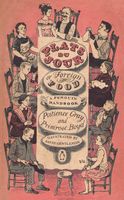Advertisement
Grilling
By Patience Gray and Primrose Boyd
Published 1957
Grilling generally applies to the finer, most tender, and smaller cuts of meat or fish and to small birds like pigeons when young and tender. Also to vegetables or fungi which contain a high degree of moisture. Two factors must be borne in mind. The object is submitted to a fierce heat. To prevent the surface exposed to this fierceness from drying, the meat or fish should be brushed over with olive oil or melted butter beforehand. If there is any doubt about the tenderness of meat, it will be improved by preliminary marinading in wine vinegar and olive oil, or in olive oil and lemon juice (particularly veal or mutton). Steaks or schnitzel cuts should be beaten with the blunt edge of a chef’s knife. The grill must be so hot that it immediately produces an outer coating on the meat through which no juice can escape. The seizure should be effected on both sides before the heat is moderated to complete the cooking. When turning the meat a spatula or tongs, rather than a fork, must be used to avoid piercing the tissue and freeing the juice. If the grill is incapable of producing this instantaneous effect through lack of intensity, pan-grilling can be substituted, particularly in respect of fillets of steak and schnitzel cuts. A frying-pan is heated till it is nearly red hot. When the steak has been beaten, flattened, and seasoned, pour a very little oil on the bottom of the pan, sufficient only to prevent burning, and slap the steak into the pan. Leave it for a few moments before turning it over, but be careful not to let it burn. This produces practically the same results as grilling, though more perilous in execution. Electric grills are better than gas grills, red-hot coke or coal is better still, and charcoal is best.



